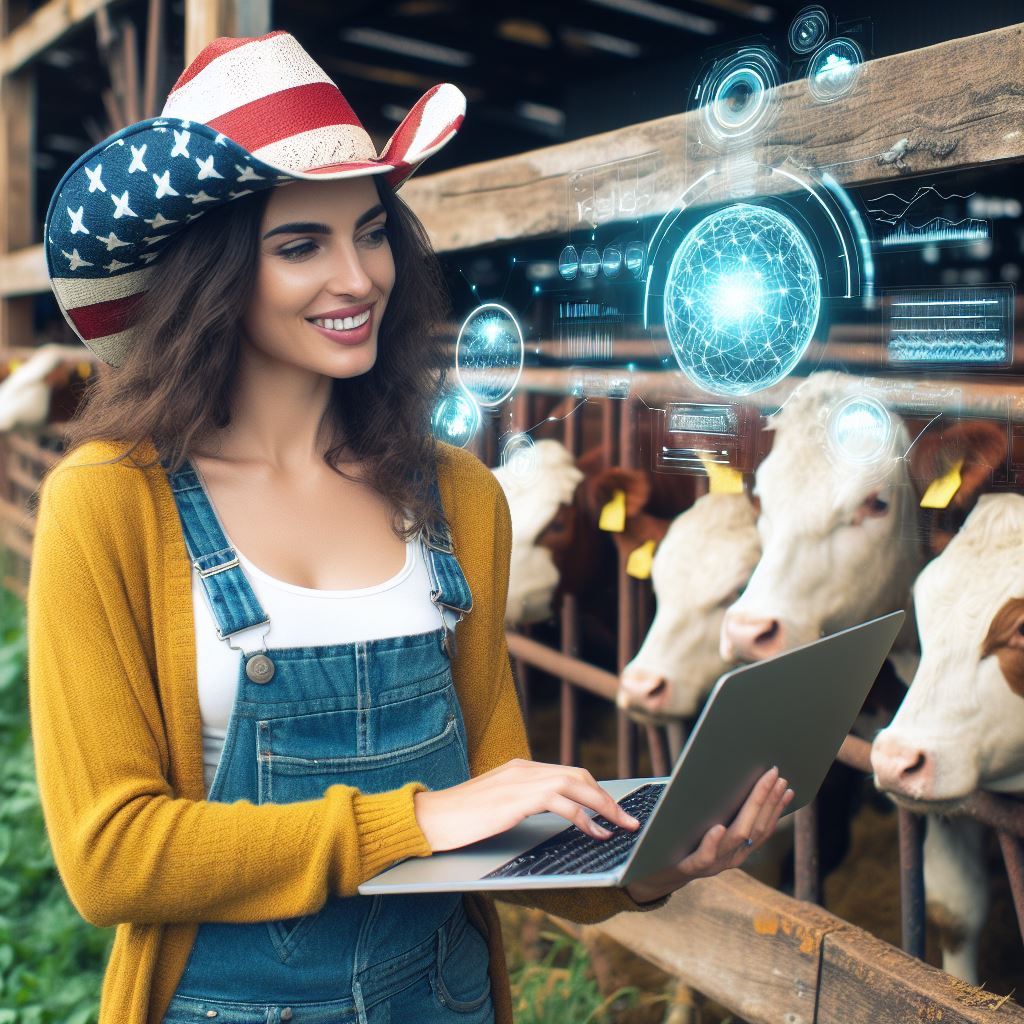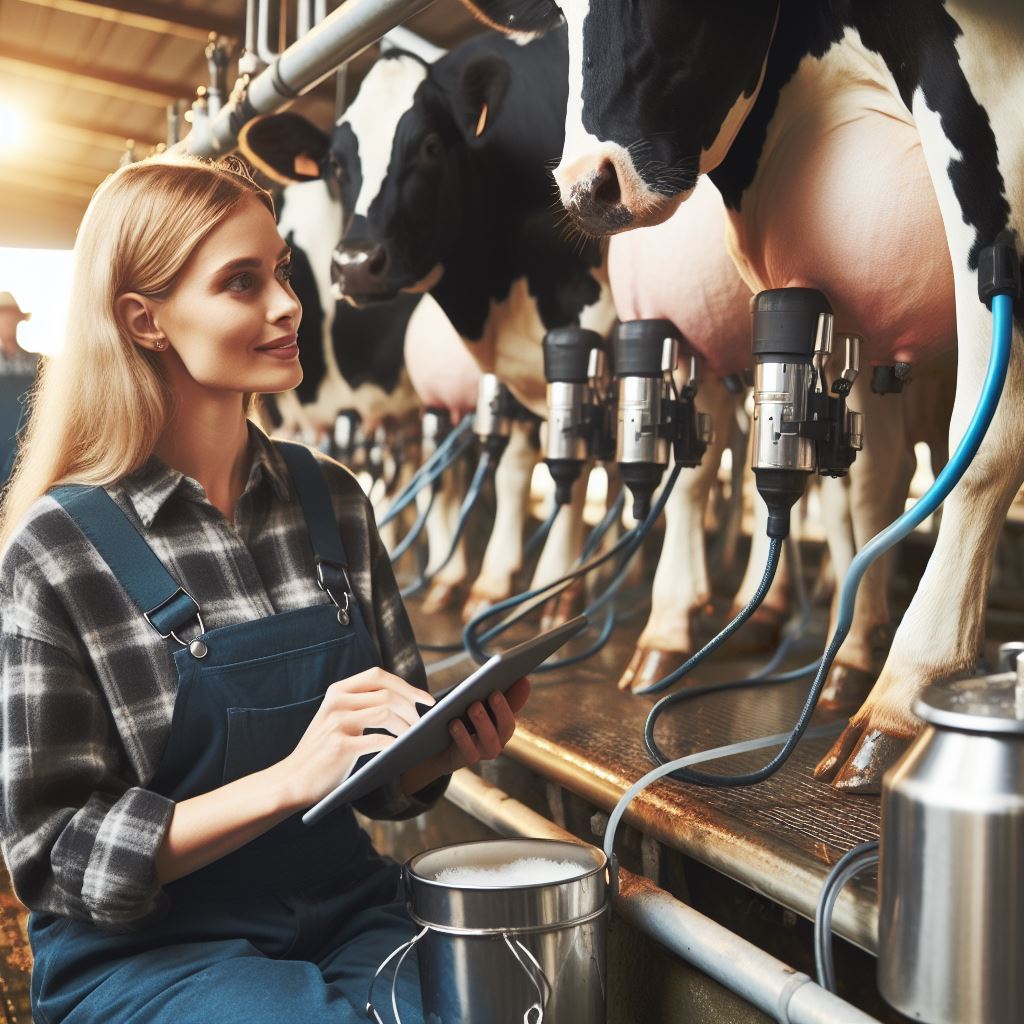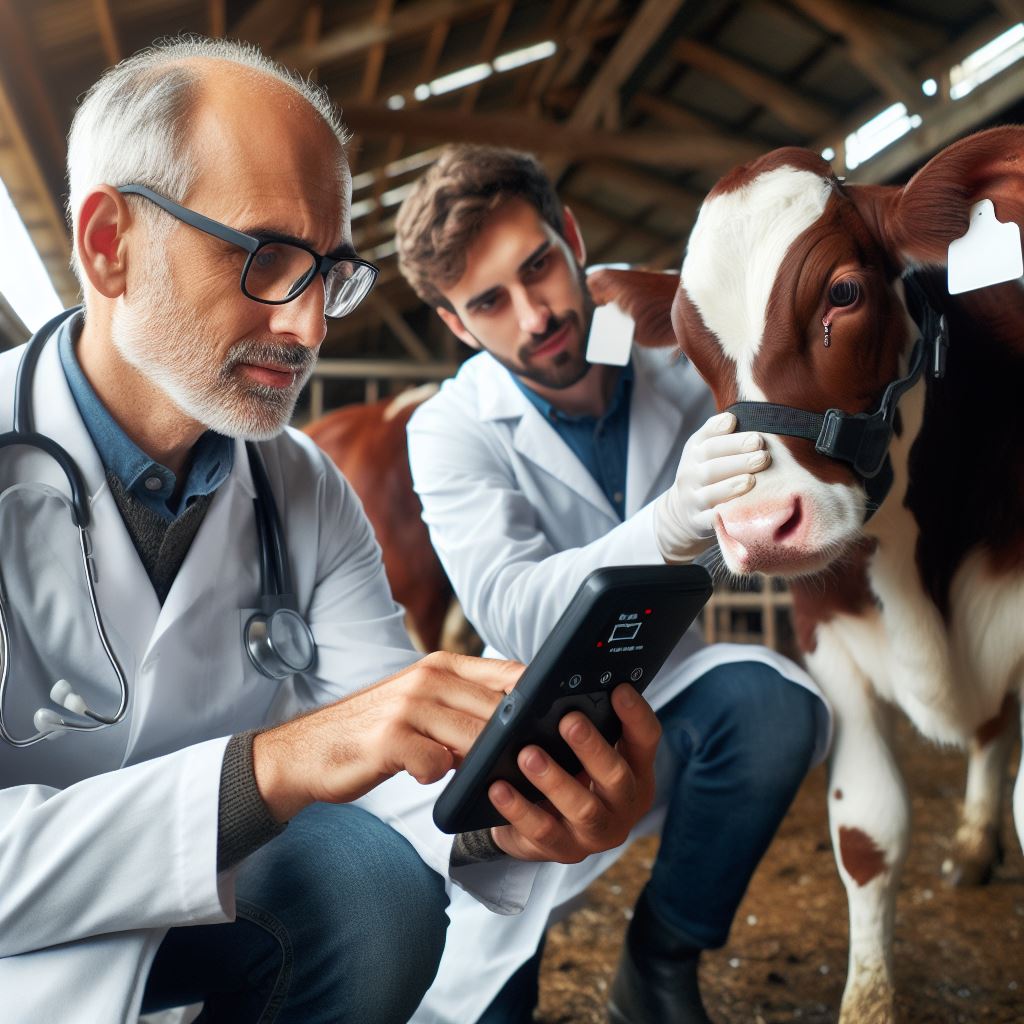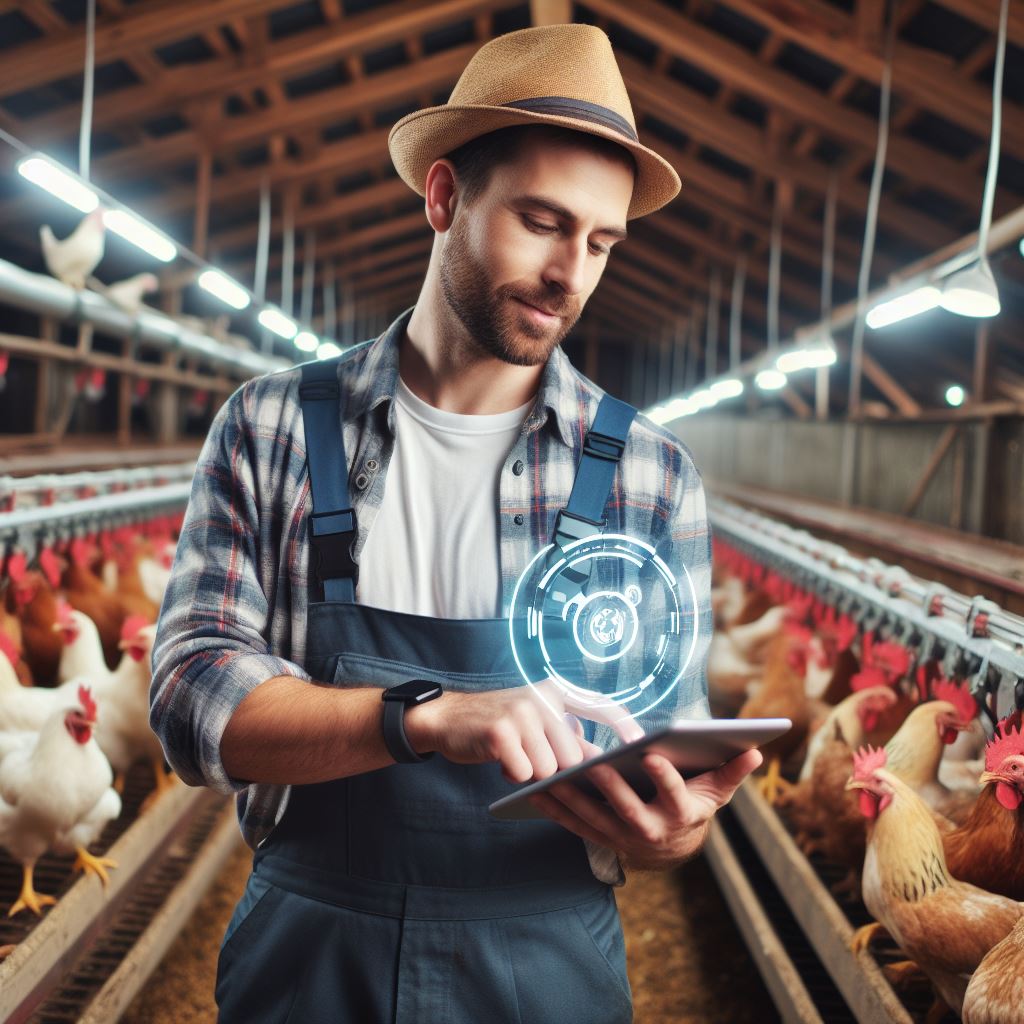Introduction
A. Livestock drones and their impact on farming dynamics
Livestock drones have revolutionized farming dynamics by transforming the way tasks are performed.
With the growing interest and adoption of drone technology in the agricultural industry, farmers are now able to accomplish various tasks more efficiently and effectively.
These autonomous flying devices are equipped with advanced sensors and cameras that allow farmers to monitor and manage their livestock from a bird’s-eye view.
By collecting real-time data, drones provide valuable insights into animal health, behavior, and overall well-being.
The impact of livestock drones on farming dynamics goes beyond just surveillance.
Farmers can now easily identify and address potential issues such as diseases or injuries, saving not only time but also money on traditional, manual inspections.
Furthermore, these drones assist in accurately assessing the condition of pastures and tracking the movement patterns of livestock.
This information helps farmers make informed decisions about rotational grazing and optimizing grazing patterns for improved land and animal management.
B. Growing interest and adoption of drone technology in the agricultural industry
The adoption of drone technology in agriculture is rapidly increasing due to its numerous benefits.
Farmers are finding that drones not only enhance their productivity but also reduce the overall environmental impact by minimizing the use of chemical fertilizers and pesticides.
Basically, livestock drones are changing the face of farming dynamics.
With their ability to gather precise and real-time data, these drones enable farmers to make informed decisions, improve efficiency, and enhance animal welfare.
As the interest in drone technology continues to grow, we can expect further advancements and innovations in the agricultural industry.
Overview of Livestock Drones
Livestock Drones are unmanned aerial vehicles specifically designed for handling livestock and supporting farm management.
A. Specialized tasks performed by livestock drones
These drones have unique features that differentiate them from other agricultural drones, allowing them to perform specialized tasks.
Transform Your Agribusiness
Unlock your farm's potential with expert advice tailored to your needs. Get actionable steps that drive real results.
Get Started- Decreasing the amount of manual labor required for livestock management.
- Assisting in monitoring and tracking the health and well-being of livestock.
- Providing improved surveillance against predators and potential threats to livestock.
- Enhancing the efficiency of mustering and herding livestock.
- Offering real-time data collection for monitoring the overall condition of the herd.
- Optimizing pasture management through aerial imaging and vegetation analysis.
- Facilitating precision feeding by providing detailed information on forage availability and nutritional needs.
- Supporting the assessment of infrastructure needs, such as fences, water troughs, and shelters.
- Assisting in the identification and treatment of injured or sick animals, leading to early intervention.
- Increasing overall operational efficiency and productivity in livestock farming.
B. Main functions and capabilities of livestock drones
The ability of livestock drones to fly over expansive areas and collect data with high precision revolutionizes farm management.
Their sensors and cameras capture aerial images and videos, which can be further analyzed to extract valuable insights.
1. Equipped with GPS and advanced navigation systems
Moreover, the drones are equipped with GPS and advanced navigation systems, allowing them to autonomously perform specific tasks.
With the collected data, farmers gain a comprehensive understanding of their livestock’s behavior, feeding patterns, and overall health.
Continuous monitoring through livestream on mobile devices enables quick response to any irregularities or potential issues.
2. Livestock drones operate silently
Livestock drones operate silently, minimizing stress for the animals and reducing the risk of injuries during herding operations.
These drones can also detect heat signatures, helping to locate isolated animals or those in distress, which might otherwise go unnoticed.
Furthermore, drones can be utilized to identify areas with overgrazing or inadequate vegetation growth, allowing farmers to address these issues promptly.
The time and cost savings provided by livestock drones are undeniable.
3. Manual labor is significantly reduced
Manual labor required for checking herds over vast areas is significantly reduced, enabling farmers to allocate resources more efficiently.
The real-time data collected by drones allows early detection of any anomalies in the animals’ health or behavior, leading to enhanced disease prevention.
Farmers can also analyze the data gathered by drones to make informed decisions regarding breeding programs or pasture management.
The implementation of livestock drones promotes a more sustainable and environmentally friendly approach to farming.
By reducing the need for helicopters or ground vehicles, the carbon footprint of livestock management is significantly reduced.
Additionally, drones reduce the reliance on harmful chemicals and medicines by enabling early detection and targeted treatments.
Essentially, livestock drones are transforming the dynamics of farming by providing invaluable support in livestock management.
Their unique functions and capabilities make them indispensable tools for farmers seeking to improve productivity, efficiency, and animal welfare.
By leveraging the power of technology, these drones revolutionize the way livestock farming is practiced, paving the way for a more sustainable future in agriculture.
Read: Sustainable Livestock Farming Technologies
Benefits of Using Livestock Drones
Using livestock drones in farming operations provides numerous benefits for farmers.
A. Improved monitoring and management of livestock
One of the key advantages is improved monitoring and management of livestock.
Drones allow farmers to easily survey their animals and keep track of their well-being.
B. Enhanced efficiency and cost-effectiveness
With the use of livestock drones, farmers can efficiently and cost-effectively manage their livestock.
Drones can cover large areas quickly and collect data that helps farmers make informed decisions.
Showcase Your Farming Business
Publish your professional farming services profile on our blog for a one-time fee of $200 and reach a dedicated audience of farmers and agribusiness owners.
Publish Your ProfileC. Reduction in labor and physical workload
Moreover, employing drones reduces the need for labor and physical workload.
Farmers can control and monitor their livestock remotely, eliminating the need for manual labor.
D. Early detection of health issues and disease prevention
Another significant benefit is the early detection of health issues and disease prevention.
Drones can capture high-resolution images and thermal data, making it easier to identify any potential health problems.
The ability to detect diseases at an early stage allows farmers to take prompt action and prevent the spread of illnesses among their livestock.
E. Optimizing their farming practices
Furthermore, livestock drones help farmers in optimizing their farming practices by gathering accurate data on feed consumption, livestock behavior, and environmental conditions.
This data assists farmers in making informed decisions to improve their management techniques and enhance the overall efficiency of their farming operations.
Drones equipped with advanced sensors and imaging technology can also detect irregularities in livestock behavior, such as unusual movements or signs of distress.
This early identification enables farmers to address any issues promptly, ensuring the welfare of their livestock and reducing potential losses.
F. Real-time monitoring capabilities
Livestock drones also provide farmers with real-time monitoring capabilities, allowing them to respond quickly to emergencies, such as predator attacks or fence breaches.
By having a bird’s-eye view of their farms, farmers can identify potential risks and take immediate action to mitigate them, saving both time and resources.
G. Map and analyze grazing patterns
In addition to these benefits, livestock drones can be used to map and analyze grazing patterns, helping farmers optimize the use of their pastures.
By understanding the grazing habits of their livestock, farmers can ensure they allocate resources effectively and prevent overgrazing or underutilization of their land.
In general, the use of livestock drones in farming operations has numerous advantages.
These include improved monitoring and management of livestock, enhanced efficiency and cost-effectiveness, reduction in labor and physical workload, and early detection of health issues and disease prevention.
Drones enable farmers to gather accurate data, make informed decisions, and respond promptly to emergencies.
Furthermore, livestock drones assist in optimizing farming practices, preventing losses, and ensuring the welfare of the animals.
Overall, the adoption of livestock drones is revolutionizing farming dynamics and benefiting farmers in multiple ways.
Read: Agri Drones: Changing the Farming Landscape
Livestock Drone Applications
A. Examples of specific applications of livestock drones in different livestock farming sectors
Livestock drone applications are revolutionizing the way farmers manage their livestock, providing efficient and effective solutions to various farming challenges.
With advancements in technology, these aerial devices have become essential tools in different livestock farming sectors.
From cattle farming to poultry farming and sheep farming, livestock drones are offering specific applications that are transforming the dynamics of farming.
B. Cattle farming: monitoring grazing patterns, counting and tracking cattle
In cattle farming, drones are being used to monitor grazing patterns, count and track cattle.
With the ability to cover large areas in a short amount of time, drones provide farmers with valuable data on the movement and behavior of their herds.
By analyzing grazing patterns, farmers can determine the optimal rotation of their cattle, leading to healthier pastures and increased productivity.
Additionally, drones can identify any cattle that have strayed or are missing, allowing farmers to act swiftly and prevent losses.
C. Poultry farming: monitoring flock behavior and health, identifying stressed or injured birds
Poultry farming also benefits greatly from the use of livestock drones.
These devices are capable of monitoring flock behavior and health, enabling farmers to detect any signs of stress or injury among the birds.
Drones equipped with thermal imaging cameras can identify areas of the poultry house that may have poor ventilation or temperature fluctuations, ensuring optimal living conditions for the flock.
With real-time monitoring, poultry farmers can address any potential issues promptly, minimizing the risk of disease outbreaks and maximizing the overall productivity of their flocks.
D. Sheep farming: tracking and herding sheep, identifying predators
In sheep farming, the use of drones has proven to be invaluable in tracking and herding sheep.
Traditionally, farmers would have to physically inspect their flocks, which could be time-consuming and labor-intensive.
With drones, farmers can easily locate and monitor their sheep, saving both time and resources.
Additionally, drones equipped with cameras and sensors can identify potential predators, such as wolves or coyotes, allowing farmers to take preventive measures and protect their flocks from harm.
Livestock drones are not only changing farming dynamics but also improving the overall efficiency and sustainability of livestock farming.
By providing farmers with real-time data and insights, these devices offer a proactive approach to managing livestock, leading to better animal welfare, increased productivity, and reduced environmental impact.
In essence, livestock drones are revolutionizing the agricultural industry, particularly in the livestock farming sectors.
With their ability to monitor grazing patterns, count and track cattle, monitor flock behavior and health, and track and herd sheep, these aerial devices are transforming the way farmers manage their livestock.
By harnessing the power of technology, farmers can optimize their farming practices, resulting in more sustainable and efficient livestock operations. Livestock drones are truly changing the game for farmers worldwide.
Read: Drones in Agri: Changing Farming Dynamics
Showcase Your Farming Business
Publish your professional farming services profile on our blog for a one-time fee of $200 and reach a dedicated audience of farmers and agribusiness owners.
Publish Your ProfileChallenges and Limitations of Livestock Drone Technology
A. Potential Drawbacks and Limitations of Livestock Drones
Livestock drones have the potential to revolutionize farming practices by increasing efficiency and reducing manual labor.
However, like any technology, they also come with their own set of challenges and limitations that need to be addressed.
B. Battery Life and Flight Duration
One of the primary challenges faced by livestock drones is their limited battery life and flight duration.
Most drones currently available in the market have a flight time of around 30 minutes, which may not be sufficient for large-scale farms.
This limitation poses challenges in monitoring and herding livestock effectively.
Drones may need to be equipped with longer-lasting batteries or alternative power sources to overcome this limitation.
C. Regulatory Constraints and Legal Issues
Another significant challenge for livestock drones is the regulatory constraints and legal issues surrounding their operation.
Different countries and regions have varying laws and regulations regarding drone usage.
These regulations often include restrictions on flight altitudes, distances from populated areas, and requirements for certification and licensing.
It is necessary for farmers to navigate these regulations and ensure compliance to avoid legal trouble.
D. Initial Investment and Affordability for Small-scale Farmers
The initial investment required to adopt livestock drone technology is another limitation that needs to be considered.
Drones, along with the necessary software and equipment, can be expensive, making it inaccessible for small-scale farmers with limited financial resources.
In order to address this issue, governments and agricultural organizations need to provide financial assistance or subsidies to encourage small-scale farmers to adopt this technology, ultimately benefiting the entire farming community.
E. Data Privacy and Security Concerns
The use of livestock drones involves collecting and analyzing vast amounts of data related to the animals and the farm.
This raises concerns about data privacy and security.
Farmers need assurance that their data will be protected from unauthorized access and that it will not be used for purposes other than improving farming practices.
Robust data encryption and strict privacy policies must be implemented to address these concerns.
Livestock drone technology holds great promise for transforming farming dynamics.
However, it is essential to acknowledge and overcome the challenges and limitations associated with their use.
Addressing the issues of battery life and flight duration, regulatory constraints and legal issues, affordability for small-scale farmers, and data privacy and security concerns will ensure the successful integration of drones into livestock farming practices.
By actively working to overcome these limitations, we can harness the full potential of livestock drones and revolutionize the way we farm, leading to increased productivity, improved animal welfare, and a more sustainable future for agriculture.
Read: Drone Tech in Agriculture: A Deep Dive
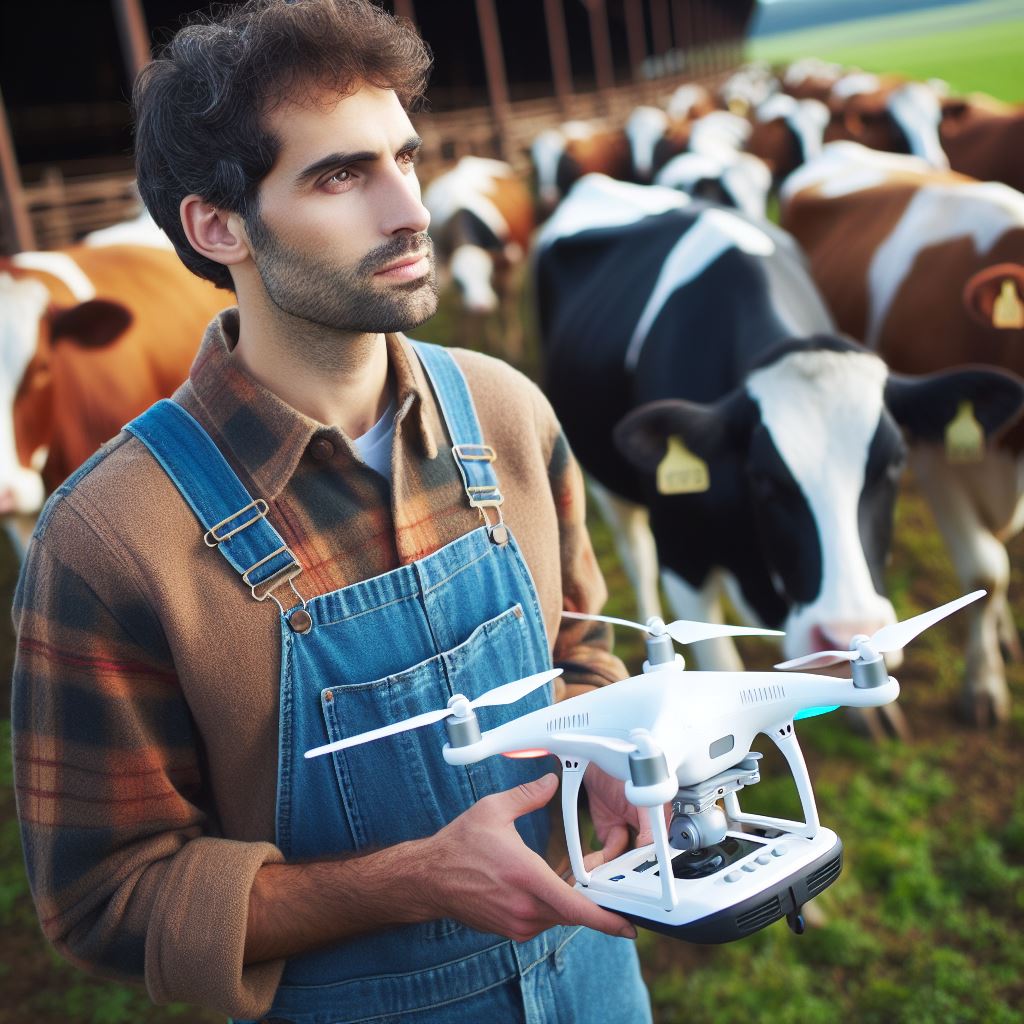
You Might Also Like: Innovative Water Conservation in Farming
Case Studies and Success Stories
As livestock drones continue to revolutionize farming dynamics, numerous farmers and organizations have successfully implemented this technology in their operations.
Real-life examples highlight the positive outcomes and benefits that these individuals and groups have experienced.
Let’s take a look at some inspiring case studies:
A. Smith Family Farm
The Smith family, owners of a large cattle farm, decided to incorporate livestock drones into their daily operations.
By utilizing drones equipped with thermal imaging cameras, they were able to monitor the health and well-being of their livestock more efficiently.
Additionally, these drones quickly identified sick or injured animals, minimizing the spread of diseases.
The positive outcomes that the Smith family experienced were remarkable.
They saw a significant reduction in the mortality rate among their cattle due to the early detection of illnesses.
Moreover, the drones enabled them to locate lost or injured livestock in remote areas of their farm and provide immediate assistance.
B. Green Acres Ranch
Green Acres Ranch, an organization committed to sustainable farming practices, embraced the use of livestock drones as part of their operations.
Through drone surveillance, they ensured better pasture management and grazing practices.
By monitoring the herd’s movement patterns and grazing intensity, they optimized land usage and prevented overgrazing.
The introduction of livestock drones at Green Acres Ranch resulted in substantial cost savings.
The drones provided detailed data about the health and behavior of their animals, enabling timely interventions and reducing veterinary expenses.
Furthermore, the enhanced pasture management allowed for increased forage productivity, resulting in higher-quality feed for the livestock.
C. Cooperative of Organic Farmers
A cooperative of organic farmers in a rural community successfully implemented livestock drones to address specific challenges they faced.
Through drone technology, they were able to monitor grazing practices, ensuring compliance with organic farming regulations.
Showcase Your Farming Business
Publish your professional farming services profile on our blog for a one-time fee of $200 and reach a dedicated audience of farmers and agribusiness owners.
Publish Your ProfileBy doing so, they maintained the integrity of their products and built consumer trust.
The drones not only helped the cooperative achieve regulatory compliance but also improved their overall operational efficiency.
They reduced the time spent manually monitoring livestock and assessing pasture conditions.
This freed up valuable resources, allowing farmers to focus on other critical aspects of their organic farming practices.
D. Sustainable Poultry Farm
A sustainable poultry farm integrated livestock drones to enhance animal welfare practices and improve efficiency.
The drones provided real-time monitoring of the poultry houses, detecting any irregularities or potential issues promptly.
This proactive approach allowed for immediate corrective action, safeguarding the poultry’s well-being.
The farm’s adoption of livestock drones resulted in several benefits.
The birds enjoyed a more comfortable and stress-free environment, leading to improved growth rates and meat quality.
Additionally, the early detection of problems prevented the spread of diseases within the flock, reducing the need for antibiotics and other medications.
E. National Agriculture Research Center
The National Agriculture Research Center recognized the potential of livestock drones in advancing farming practices.
They conducted an extensive study using drones to monitor and track cattle behavior.
The collected data provided valuable insights into grazing patterns, social interactions, and overall animal health.
The research center’s findings demonstrated that the use of livestock drones increased the understanding of animal behavior.
This knowledge allowed farmers to implement precise management strategies, resulting in improved productivity and animal welfare.
The integration of drones in their research and extension programs also empowered them to educate farmers about best practices.
These case studies and success stories clearly illustrate the positive impact of livestock drones on farming operations.
Farmers and organizations that have embraced this technology have experienced numerous benefits, such as improved animal health, cost savings, increased productivity, and regulatory compliance.
As the use of livestock drones becomes more widespread, it will continue to reshape farming dynamics, contributing to a more efficient and sustainable agricultural industry.
Future Prospects and Advancements in Livestock Drone Technology
As technology continues to advance at an exponential rate, it is no surprise that it has made its way into the agricultural industry.
Livestock drones have emerged as a game-changer, transforming farming dynamics and offering numerous benefits.
In this section, we will explore the future prospects and advancements in livestock drone technology, discussing potential developments and improvements that could revolutionize the way we manage and care for our livestock.
A. Increased Efficiency and Precision
- Livestock drones have already proven their ability to monitor and gather data on animals in a much faster and efficient manner compared to traditional methods.
- Future advancements will further enhance their capabilities, allowing them to autonomously perform tasks such as herd monitoring, health assessments, and even feeding.
- With improved sensors and AI integration, drones can accurately detect signs of distress or illness, enabling early intervention and preventing potential outbreaks.
B. Enhanced Data Collection and Analysis
- Researchers and developers are actively working to upgrade livestock drones to be capable of collecting more extensive and detailed data.
- From gathering information about an animal’s daily behavior to tracking environmental factors that impact their well-being, drones can provide a comprehensive understanding of livestock patterns.
- Advanced data analysis techniques, including machine learning and predictive modeling, can then be applied to identify patterns and correlations for informed decision-making.
C. Improved Animal Welfare
- Livestock drones have the potential to significantly improve animal welfare by continuously monitoring their health and detecting early signs of disease.
- With the ability to quickly identify ailing animals, farmers can promptly isolate and provide appropriate care, reducing the risk of spreading illnesses throughout the herd.
- Additionally, drones can help optimize grazing patterns, ensuring animals have access to fresh pasture and minimizing overgrazing.
D. Crop-Livestock Integration
- Integrating livestock drones with crop management systems can lead to more efficient use of resources and improved sustainability.
- By analyzing real-time data on soil conditions, drone-equipped farmers can make informed decisions about grazing rotations and fertilization.
- This integration can promote healthy soil, reduce the environmental impact, and enhance overall farm productivity.
E. Collaborative Research and Innovation
- Multiple ongoing research projects and collaborations are dedicated to further advancing livestock drone technology.
- Scientists, engineers, and farmers are working together to develop improved drone designs, battery life, and obstacle avoidance capabilities.
- These efforts aim to address the challenges faced by current livestock drones and foster continuous innovation in the field.
In a nutshell, livestock drones have the potential to revolutionize farming dynamics by increasing efficiency, enhancing data collection and analysis, improving animal welfare, enabling crop-livestock integration, and driving collaborative research and innovation.
As we move forward, it is essential to continue investing in the development of livestock drone technology, ensuring it remains at the forefront of agricultural advancements.
Conclusion
The use of livestock drones is revolutionizing farming dynamics.
These drones can effectively monitor animals, distribute feed, and assess their overall health and well-being.
Farmers who incorporate this technology can benefit from increased efficiency, reduced labor costs, and improved animal welfare.
Livestock drones have the potential to transform the way farmers operate and should be explored as a valuable tool in modern farming practices.
By embracing this innovative technology, farmers can enhance their operations and achieve sustainable and profitable outcomes.
It is time to embrace livestock drones and unlock the endless possibilities they offer for the future of farming.

